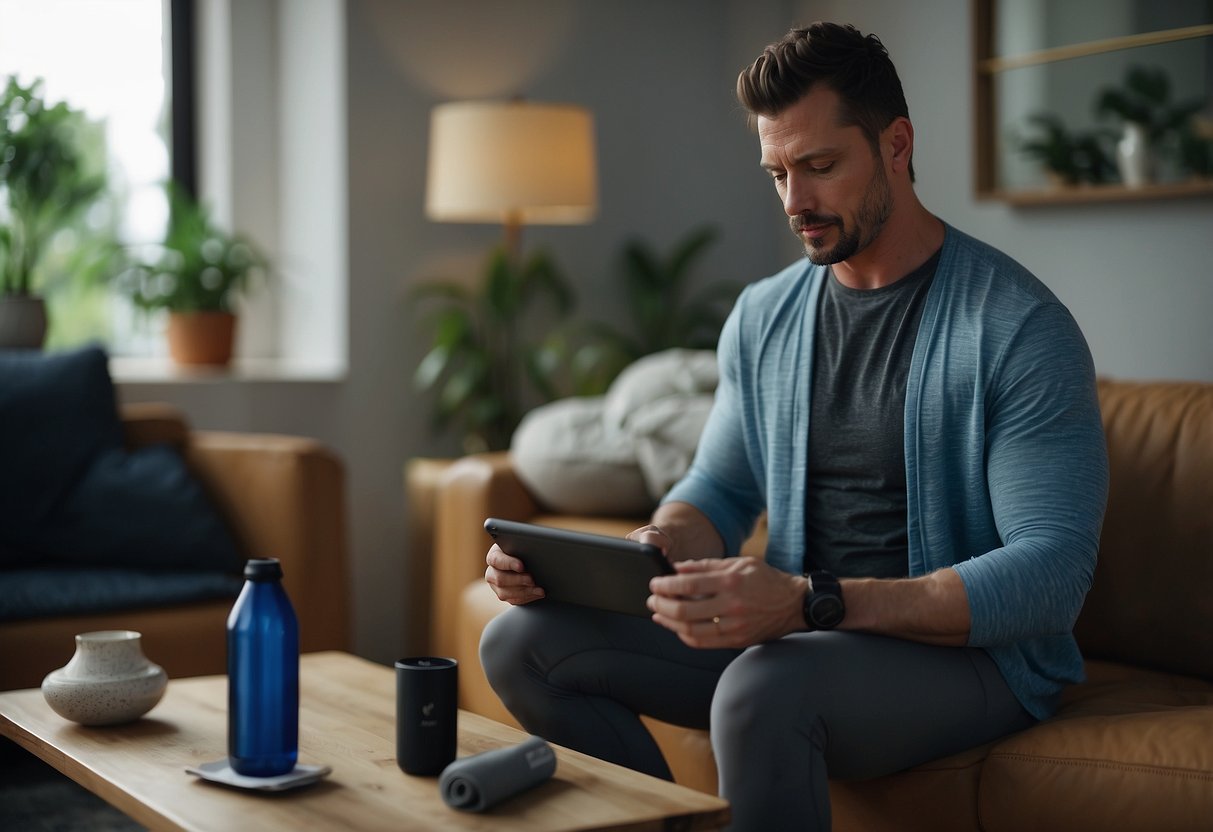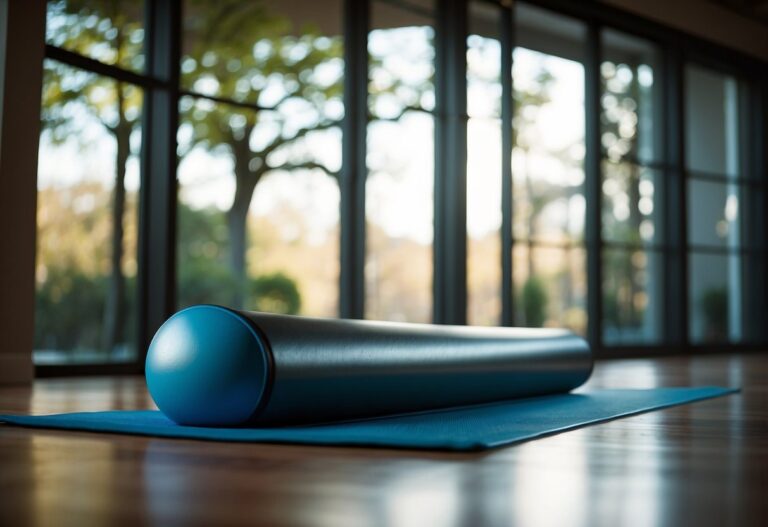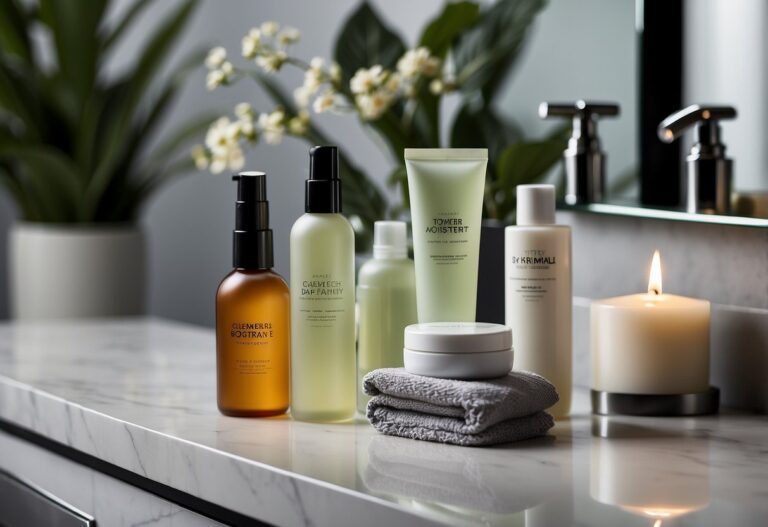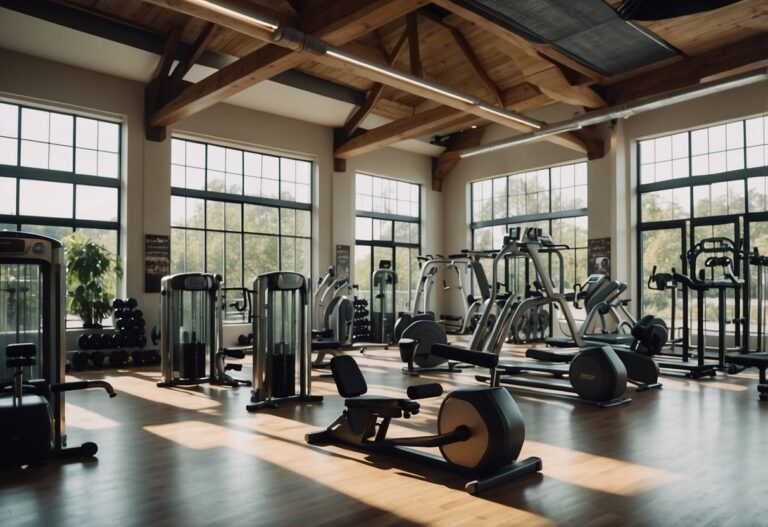Finding the time and motivation for gym workouts can be quite a challenge, especially with a busy lifestyle. Fortunately, you don’t necessarily need a gym to achieve your fitness goals. Home workouts offer a convenient and effective alternative that can fit easily into your schedule. Whether you’re a beginner or looking to add some new exercises to your routine, there are plenty of options to keep you engaged and active.

How can you make the most out of your home workouts and see real progress? Understanding the basics and having a variety of exercises at your disposal can help you stay consistent and motivated. From bodyweight routines to no-equipment exercises, home workouts can be tailored to your needs and fitness level, ensuring you build strength and stamina right from your living room.
High-Intensity Interval Training (HIIT)
High-Intensity Interval Training (HIIT) is a great way to push your fitness to the next level. It involves short bursts of intense exercise followed by brief rest periods.
HIIT is highly effective for burning fat and building muscle. It’s also quite time-efficient. You can complete a solid workout in about 20 minutes or less.
To get started, try a simple workout. For instance, do 30 seconds of jumping jacks, rest for 15 seconds, then 30 seconds of burpees. Repeat this cycle several times.
HIIT can be done anywhere, even in your living room. This makes it perfect for men with busy schedules or limited access to gym equipment.
For more ideas, check out these 11 best HIIT workouts for men.
As you progress, you can adjust the intensity and duration of your intervals to keep challenging yourself.
Bodyweight Squats
Bodyweight squats are a fantastic exercise that can be done anywhere without equipment.
Start by standing with your feet a bit wider than shoulder-width apart. Keep your toes pointing out at a comfortable angle, your back straight, and your head up.
Lower yourself by bending your knees and pushing your hips back. Ensure your weight stays on your heels. You might feel like you’re sitting back into an invisible chair.
Once you’re as low as you can go, drive your hips forward and push up through your heels to return to the starting position. This movement mirrors sitting down and standing up, a motion you do every day.
For an extra challenge, try the 100 bodyweight squat challenge, where you perform 100 squats using a deck of cards to keep track.
Bodyweight squats help build strength in your legs and core. They also improve your balance and flexibility. Even if you’re new to working out, integrating this exercise into your routine can bring significant benefits.
Push-Ups
Push-ups are a fantastic exercise for building upper body strength.
You can start with basic push-ups by placing your hands shoulder-width apart on the floor, keeping your body in a straight line. Lower yourself until your elbows are at a 90-degree angle. Then, push back up to the starting position.
For beginners, try the assisted push-up, keeping your knees on the ground. This push-up variation helps build strength gradually.
As you progress, experiment with different push-up variations to target various muscle groups. These variations can include decline push-ups, diamond push-ups, and clap push-ups. They will keep your workout challenging and engaging.
Dumbbell Rows
Dumbbell rows are a great exercise to strengthen your back and improve your posture. They target your upper and middle back muscles, including the latissimus dorsi and the rhomboids.
Start by standing next to a weight bench. Place one knee and the same-side hand on the bench for support. Hold a dumbbell in your other hand. Your back should be straight.
Pull the dumbbell towards your hip, keeping your elbow close to your body. Lower the weight slowly. Remember to focus on squeezing your shoulder blades together. For a detailed guide, check out this how-to on dumbbell rows.
Burpees
Burpees are a fantastic full-body exercise that you can do anywhere without equipment. They work multiple muscle groups and are great for boosting cardiovascular fitness.
Start in a standing position. Drop into a squat with your hands on the ground. Kick your feet back into a plank position. Do a push-up. Jump your feet back to your hands and jump into the air.
If you’re looking for a challenge, try the ‘Death By Burpee’ workout. Start with one burpee in the first minute, two in the second, and continue increasing by one each minute until you can’t go any further.
There are many variations of burpees to keep things interesting. For example, single-leg burpees are a tough unilateral challenge that adds an extra layer of difficulty.
Burpees are intense and can be tiring, but they’re worth it. Incorporate them into your home workout routine for an effective fitness boost.
Planks
Planks are a fantastic core exercise. They might look simple, but they effectively target your abs, back, and shoulders. Begin by placing your forearms and toes on the floor, creating a straight line from head to heels.
Make sure your elbows are directly under your shoulders. Engage your core by pulling your belly button towards your spine.
Keep your body straight and avoid letting your hips sag. Hold this position as long as you can while maintaining form. Start with short periods and gradually increase.
You can add variety to your routine by trying plank shoulder taps or side planks. These variations help engage different muscles and keep your workouts interesting.
For a structured approach, consider a 30-day plank challenge to build strength gradually.
Remember, consistency is key. Performing planks regularly will significantly improve your core strength and stability.
Mountain Climbers
Mountain climbers are an excellent exercise to include in your home workout routine. They offer a fantastic way to build cardio endurance and enhance core strength. Plus, they don’t need any equipment, making them perfect for home workouts.
You engage multiple muscle groups with this move. As you perform mountain climbers, your shoulders, arms, and chest stabilise your upper body, while your core supports the rest of your body.
For the best form, start in a plank position. Pull one knee towards your chest, then quickly switch legs. Keep your hips steady and avoid letting your back sag.
If you’re new to mountain climbers, you might want to start with short intervals. Try 20 seconds of climbing followed by 10 seconds of rest. Gradually increase your time as you get stronger.
Mountain climbers are versatile. You can incorporate them into a full-body workout, mix them with other bodyweight exercises, or use them for a quick cardio boost.
Trying this exercise may seem challenging at first, but stick with it. You’ll see improvements in your endurance and strength. Plus, it’s a great way to break a sweat without leaving home.
Bicycle Crunches
Bicycle crunches are great for working on your abs. To do this exercise, lie flat on the floor with your lower back pressed into the ground and your knees bent. Place your hands behind your head.
When you engage in bicycle crunches, you’re targeting your obliques and rectus abdominis. As you lift your shoulder blades off the ground, bring one knee up towards your chest while rotating your torso to touch the opposite elbow to that knee.
This exercise can be made more effective by working in different sets. Consider doing 3 to 4 sets of 40 seconds on and 20 seconds off. This helps you avoid rushing through the movements.
Adding variations also keeps your workout interesting. You can hold a weight in front of you while balancing on your tailbone to increase the challenge. This small adjustment not only increases the intensity but also keeps you motivated.
Lunges
Lunges are a fantastic exercise for building leg strength. They target the quads, hamstrings, and glutes, giving you a powerful lower body. You can do them anywhere, no equipment needed.
Forward lunges are the most common. Step forward with one foot, lower your body until both knees are bent at 90 degrees, then push back to the starting position.
You can also try lateral lunges. Step to the side, keeping your lunging foot planted. This move engages different muscles and adds variety to your workout.
Remember to keep your torso upright and avoid letting your knee go past your toes to protect your joints and get the best results.
Practising lunges regularly will improve your balance and stability. It’s also helpful to perform them slowly at first to ensure proper form before increasing speed or adding weights.
Resistance Band Exercises
Resistance bands are versatile and can help you stay fit at home.
One great exercise is the band pull-apart. Hold the band at shoulder height and pull it apart, squeezing your shoulder blades together like this.
Try the band pallof press to work your core. It helps prevent your torso from twisting, making your core stronger.
Banded squats are also effective. Step on the band, hold it above your shoulders, and squat down.
These exercises can help you build strength and stay active.
Effective Warm-Up Techniques
Warming up before a workout helps prevent injuries and improves your performance. This section will cover the importance of warming up and introduce dynamic stretching routines.
Importance of Warming Up
Warming up is crucial before starting any workout. It increases your heart rate, pumps more blood to your muscles, and prepares your body for more strenuous activities. This makes your muscles more pliable and reduces the risk of strains and sprains.
Warming up also:
- Increases flexibility
- Improves mental focus
- Enhances coordination
Skipping a warm-up can lead to injuries. Imagine trying to run a sprint with cold muscles—it’s a recipe for disaster. Treat warm-ups as an essential part of your fitness routine.
Dynamic Stretching Routines
Dynamic stretching involves active movements that help to increase blood flow and loosen muscles. Unlike static stretching, it prepares your body for physical activity by mimicking motions you’ll perform during your workout.
Examples of effective dynamic stretches:
- Leg Swings: Swing one leg forward and backward, then switch. Helps warm up your hip flexors and hamstrings.
- Arm Circles: Rotate your arms forward and backward in small and then larger circles to loosen your shoulders.
- Scorpion Stretch: Lie face down, lift one leg, and cross it over to the opposite side of your body. Great for the back and hips learn more.
Additional tips:
- Perform each stretch for about 30 seconds.
- Focus on smooth, controlled movements.
- Don’t rush the process; take your time to get fully warmed up.
By incorporating these techniques, you’re setting yourself up for a safer and more effective workout.
Strength Training at Home
Strength training at home can be highly effective with the right techniques. You can get great results by using bodyweight exercises and household items as weights.
Bodyweight Exercises
Bodyweight exercises are excellent for building strength without any equipment. Push-ups are a classic example that targets your chest, shoulders, and triceps. Aim for three sets of 10-15 reps.
Squats work your quads, hamstrings, and glutes. Stand with feet shoulder-width apart, then lower yourself as if you’re sitting back in a chair. Try doing 3 sets of 15-20 reps.
Another excellent bodyweight exercise is the plank, which strengthens your core. Hold a plank position with hands directly under your shoulders and keep your body in a straight line. Start with 30 seconds and gradually increase the time as you get stronger.
Lastly, lunges are great for your legs and glutes. Take a big step forward with one leg and lower your body until both knees are at 90-degree angles. Perform 3 sets of 10 reps on each leg.
Utilising Household Items as Weights
You can make strength training more challenging by using household items as weights. Water bottles can act as light dumbbells. Use them for bicep curls or shoulder presses. Try 3 sets of 12-15 reps.
Backpacks filled with books can be used for exercises like squats and lunges. This adds extra weight, making the movements more intense. Simply wear the backpack and perform your usual squats or lunges.
Chairs can also be versatile. Use them for triceps dips by placing your hands on the edge of the seat and lowering yourself down. Aim for 3 sets of 10-12 reps.
Even bags of rice or flour can serve as makeshift kettlebells. Use them for deadlifts or bent-over rows. Perform 3 sets of 10 reps each.
By getting creative with items you already have at home, you can effectively train your muscles and build strength without needing any fancy equipment.
Recovery and Nutrition
Recovery and nutrition play a vital role in any workout routine. Proper post-workout nutrition and effective recovery techniques can significantly enhance your performance and overall well-being.
Post-Workout Nutrition
What you eat after a workout can greatly impact your recovery and muscle growth. Consuming a mix of protein and carbohydrates is essential. Protein helps in muscle repair and growth, while carbohydrates replenish your energy stores.
Protein: Aim for at least 20-30 grams of protein after exercise. This can come from sources like chicken, fish, eggs, or plant-based options such as beans and lentils.
Carbohydrates: Include complex carbs like whole grains, sweet potatoes, or fruits. These help restore glycogen levels in your muscles, fuelling your recovery.
Hydration: Drink plenty of fluids to replace what you’ve lost during your workout. Aim for about 3 cups of water for every pound lost through sweat.
Some people also find supplements like BCAAs or whey protein shakes beneficial for quicker recovery.
Stretching and Foam Rolling
Stretching and foam rolling are key practices that can help improve your flexibility, prevent injuries, and reduce muscle soreness.
Stretching: Incorporate both static and dynamic stretches into your routine. Static stretches involve holding a position for a set time (15-30 seconds), while dynamic stretches involve moving parts of your body through a full range of motion. Focus on major muscle groups like hamstrings, quadriceps, and shoulders.
Foam Rolling: Foam rolling helps to release muscle tightness and improve blood flow. Spend about 15 minutes rolling out the muscles you worked on, applying steady pressure to any tight or sore spots.
Routine: Make these activities a regular part of your post-workout ritual to maximise their benefits.
By focusing on proper nutrition and recovery techniques, you’ll be better equipped to handle your workouts and achieve your fitness goals.







